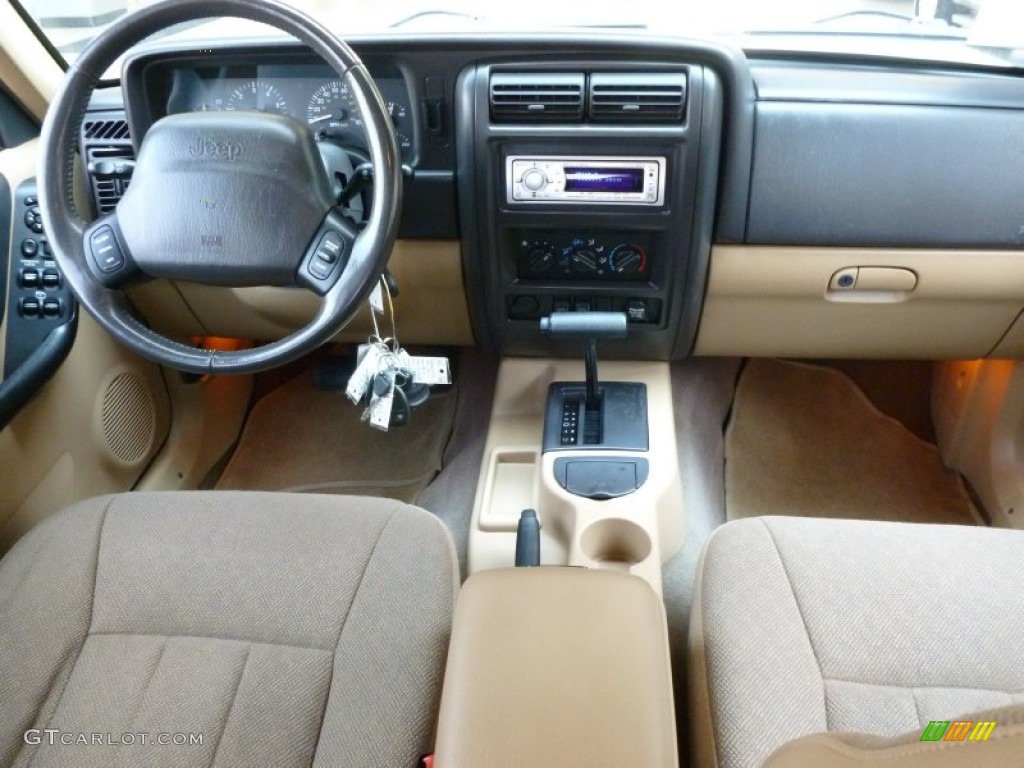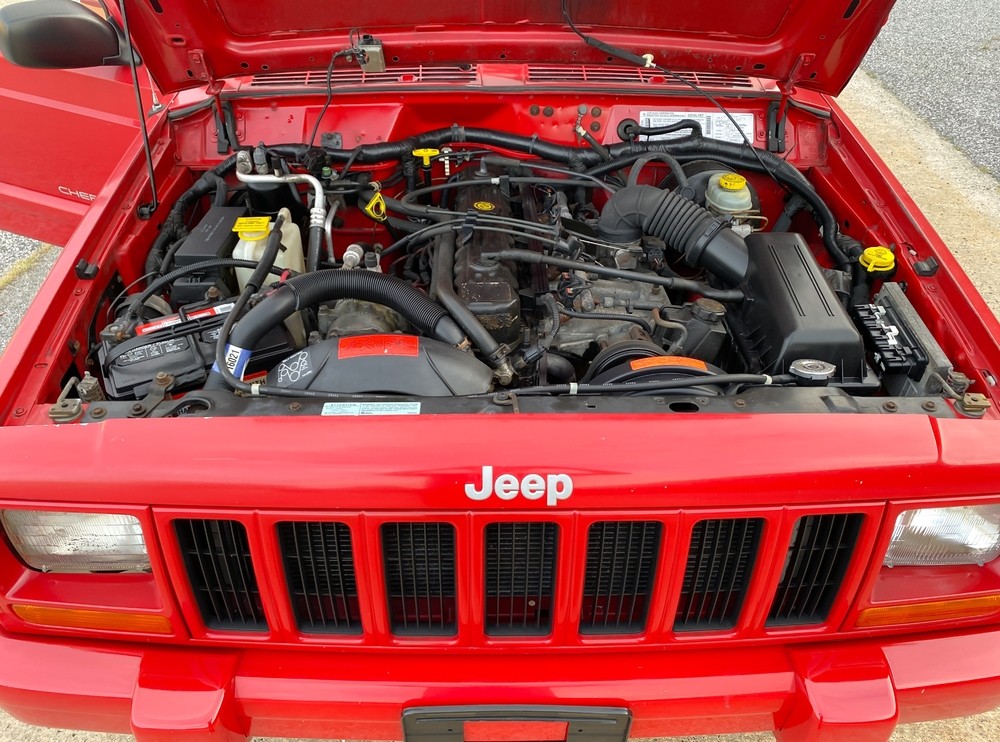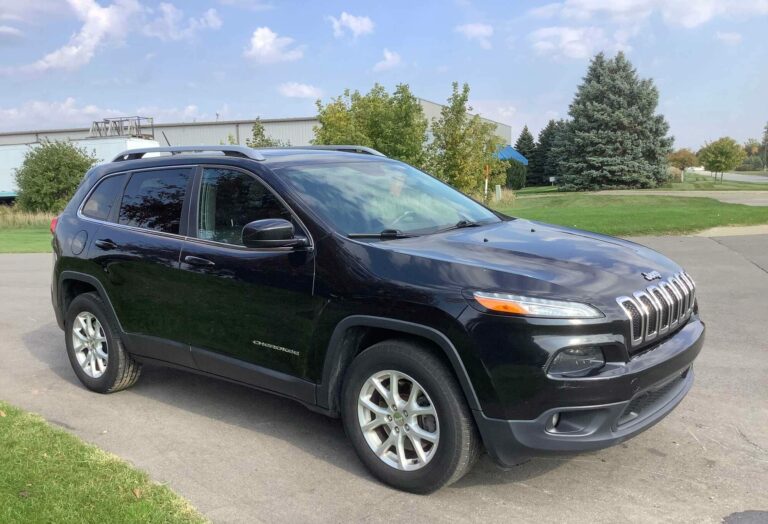Jeep Cherokee Classic: The Enduring Legend of the XJ
Jeep Cherokee Classic: The Enduring Legend of the XJ jeeps.truckstrend.com
In the vast landscape of automotive history, few vehicles have etched their legacy as deeply and distinctively as the Jeep Cherokee Classic, more affectionately known by its chassis code, the XJ. Far more than just an SUV, the XJ is an icon, a testament to rugged simplicity, unparalleled capability, and a design philosophy that prioritized function over fleeting trends. Launched in 1984, the Cherokee XJ redefined the sport utility vehicle segment, ushering in an era of compact, unibody SUVs that could conquer both the urban jungle and the most challenging off-road trails. Its importance lies not just in its groundbreaking design, but in its enduring appeal to a diverse demographic—from daily commuters seeking reliability to hardcore off-road enthusiasts craving a modifiable, go-anywhere machine. The Jeep Cherokee Classic isn’t just a vehicle; it’s a culture, a community, and a legend that continues to captivate hearts decades after its final production run in North America.
The XJ Legacy: History and Evolution
Jeep Cherokee Classic: The Enduring Legend of the XJ
The story of the Jeep Cherokee XJ begins in the early 1980s, a time when SUVs were still largely truck-based, heavy, and often cumbersome. American Motors Corporation (AMC), under the visionary leadership of Dick Teague and an engineering team that included Francois Castaing, set out to create something entirely new. The result was the 1984 Jeep Cherokee XJ, a vehicle that pioneered the unibody (monocoque) construction for an SUV, making it significantly lighter, more agile, and more fuel-efficient than its competitors. This revolutionary approach allowed the XJ to shed over 1,000 pounds compared to its predecessors, fundamentally changing the SUV paradigm.
Initially available in two-door and four-door configurations, the XJ was an instant success. Throughout its lengthy production run (1984-2001 in North America), it underwent several refinements, though its core design remained remarkably consistent. A significant facelift occurred in 1997, introducing a more aerodynamic front fascia, revised taillights, and an updated interior with improved ergonomics and safety features like driver and passenger airbags. Despite these updates, the XJ never strayed from its fundamental principles of robustness and utility, solidifying its status as a timeless classic.
Design and Engineering Philosophy: Form Meets Function
The design of the Jeep Cherokee XJ is a masterclass in functional aesthetics. Its boxy, utilitarian lines are instantly recognizable and contribute to its classic appeal. Every crease and panel serves a purpose, from the upright windshield offering excellent visibility to the flat sides that minimize damage on tight trails.
Exterior: The XJ’s compact dimensions (especially compared to modern SUVs) are a key part of its off-road prowess, allowing it to navigate narrow trails with ease. Its high ground clearance and short overhangs (particularly the front) are inherent advantages for tackling obstacles.
Interior: The cabin of the Cherokee Classic is a testament to durability and simplicity. While not luxurious by modern standards, it is supremely practical. Hard-wearing plastics, durable fabrics, and a straightforward dashboard layout define the space. The rear cargo area, though not massive, is highly usable, especially with the rear seats folded down, making it a surprisingly versatile hauler for its size.
Unibody Construction: This was the XJ’s most significant engineering departure. Unlike traditional body-on-frame SUVs, the XJ’s chassis and body are integrated into a single, rigid structure. This design offered several benefits:
- Lighter Weight: Improved fuel economy and performance.
- Increased Rigidity: Better handling and reduced body flex.
- Lower Center of Gravity: Enhanced stability on and off-road.
While unibody construction is now common, the XJ proved its robustness, enduring millions of miles of abuse, a testament to its over-engineered structure.
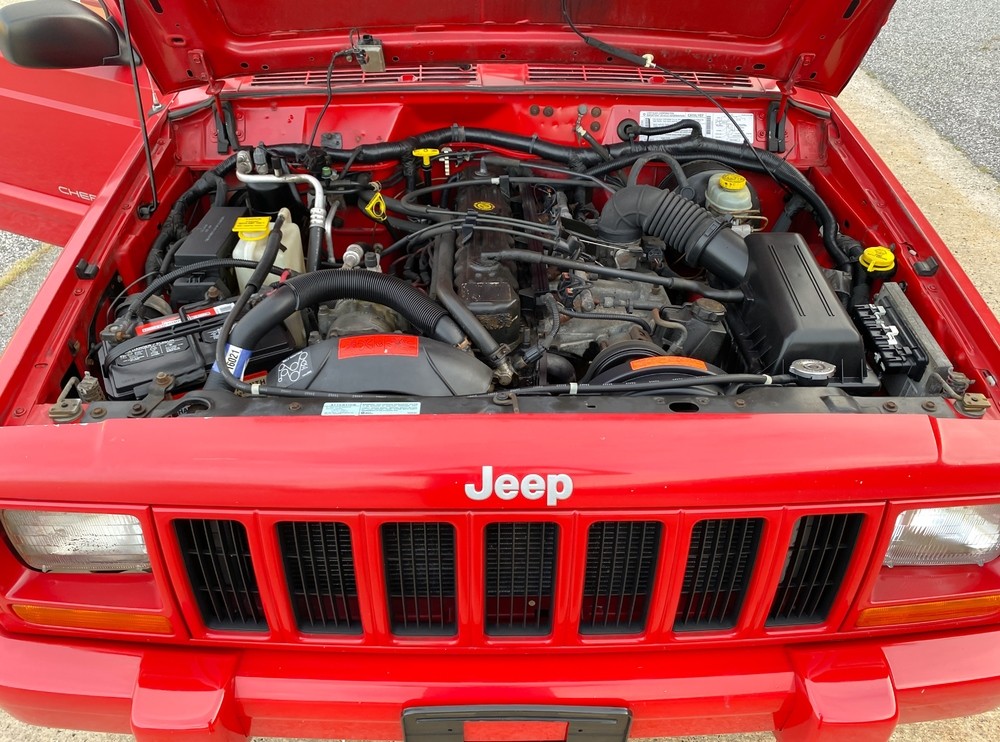
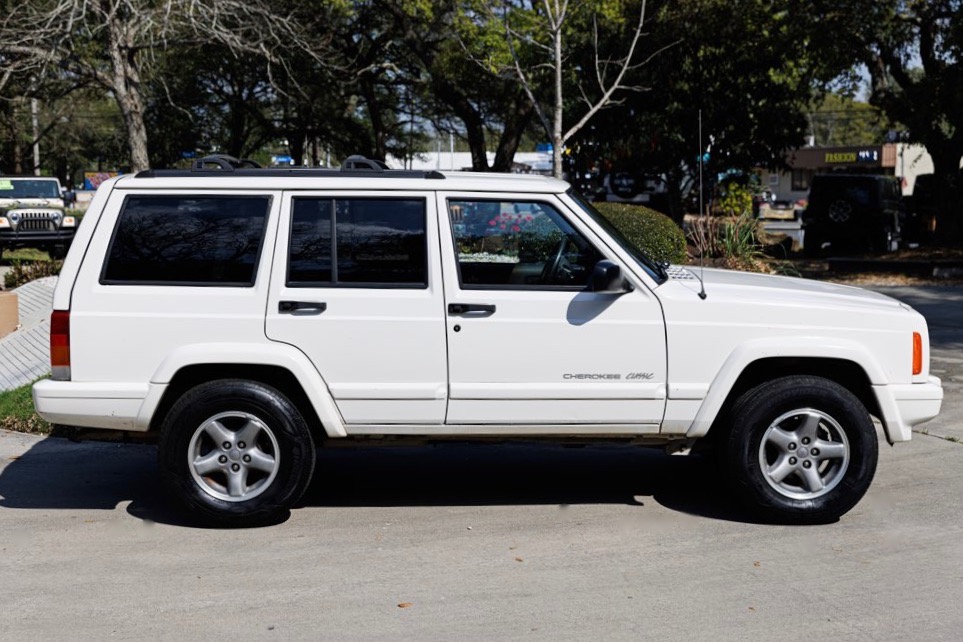
Suspension: The XJ features a robust coil-spring solid axle front suspension (Jeep’s Quadra-Link design) and a leaf-spring solid axle rear suspension. This combination provides excellent articulation for off-road obstacles while maintaining durability and load-carrying capacity.
Powertrain Options: The Heart of the Beast
While various engines were offered throughout the XJ’s lifespan, one stands head and shoulders above the rest: the legendary 4.0-liter AMC Inline-Six (I6) engine.
4.0L I6 Engine: Introduced in 1987, this engine became synonymous with the Cherokee’s bulletproof reliability and strong performance. Known for its robust cast-iron block, ample low-end torque, and incredible longevity, the 4.0L I6 is often cited as one of the most reliable engines ever built. It provides plenty of power for highway cruising and, more importantly, the torque needed to crawl over rocks and through mud with ease. Early versions produced around 177 horsepower, while later High Output (HO) versions (from 1991 onwards) pushed that to 190 horsepower and 225 lb-ft of torque.
Other Engines:

- 2.5L AMC Inline-Four (I4): A more economical option, but less powerful. Common in base models.
- 2.8L GM V6: An early V6 option, quickly replaced by the 4.0L.
- 2.1L Renault Diesel (early models) / 2.5L VM Motori Diesel (export models): Offered in some markets for better fuel economy.
Transmission Options:
- Automatic: The Aisin-Warner AW4 4-speed automatic transmission is as legendary as the 4.0L engine. It’s incredibly durable, smooth-shifting, and well-suited to the engine’s power band.
- Manual: Various manual transmissions were offered, including the AX-5 (for 2.5L) and the AX-15 (for 4.0L). While less common, these offer more direct control for off-roading purists.
Transfer Cases: The XJ offered two primary transfer case options, both highly capable:
- NP231 (Command-Trac): A part-time 4WD system. It offers 2WD, 4-High (part-time), Neutral, and 4-Low. 4-High should only be used on loose or slippery surfaces. This is the more common and generally preferred option for serious off-roading due to its simplicity and strength.
- NP242 (Selec-Trac): A full-time 4WD system. It offers 2WD, 4-Part-Time, 4-Full-Time, Neutral, and 4-Low. The "4-Full-Time" mode allows the vehicle to be driven on dry pavement in 4WD, making it more versatile for varied conditions.
Why the XJ Endures: Key Attributes and Benefits
The continued popularity of the Jeep Cherokee Classic is no accident. It’s a result of a compelling combination of attributes:
- Reliability and Durability: The 4.0L engine and AW4 transmission are virtually bomb-proof when properly maintained. Many XJs routinely exceed 200,000 or even 300,000 miles.
- Off-Road Prowess: Despite its compact size, the XJ is incredibly capable off-road. Its solid axles, good ground clearance, and favorable approach/departure angles make it a formidable trail machine, often surprising larger, more modern SUVs.
- Simplicity of Maintenance and Modification: The XJ is remarkably easy to work on. Its straightforward mechanicals mean that many common repairs can be done by a home mechanic. Furthermore, it boasts one of the largest and most diverse aftermarket support networks of any vehicle, making customization virtually limitless.
- Affordability: Both the initial purchase price (for a used model) and the cost of parts are generally low, making it an accessible entry point into the off-roading world or a reliable daily driver for budget-conscious buyers.
- Practicality: With its spacious interior for its footprint and decent cargo capacity, the XJ can serve as a capable daily driver, a family vehicle, or a weekend adventure rig.
Important Considerations Before Buying/Owning
While the XJ is a fantastic vehicle, prospective owners should be aware of common issues and maintenance requirements:
- Rust: The biggest enemy of the XJ. Check rocker panels, floorboards, frame rails (especially unibody pinch welds), and rear quarter panels for rust, particularly in areas that use road salt.
- Cooling System: The 4.0L engine is prone to overheating if the cooling system is not meticulously maintained. Replace the radiator, water pump, thermostat, and fan clutch regularly. Convert to an open cooling system if it’s an early model (pre-1991).
- Oil Leaks: Common from the rear main seal, oil filter adapter, and valve cover. Most are minor but should be addressed.
- Sagging Leaf Springs: The rear leaf springs tend to flatten over time, leading to a saggy rear end. This is a common and relatively easy fix with aftermarket replacements or add-a-leaf kits.
- HVAC Blend Door: The plastic blend door that controls temperature can break, leading to no heat or only heat. Repair kits are available.
- Fuel Economy: Don’t expect hybrid-like numbers. The 4.0L typically gets 15-20 MPG, depending on driving style, tires, and modifications.
- Safety Features: Being an older vehicle, the XJ lacks many modern safety features like stability control, traction control, and multiple airbags (later models had front airbags).
Pre-purchase Inspection: Always get a thorough pre-purchase inspection from a trusted mechanic familiar with Jeeps. Look for rust, listen for unusual engine noises, check for fluid leaks, and test all 4WD modes.
Customization and Modification Guide
The Jeep Cherokee Classic is a blank canvas for customization, a major part of its appeal. The aftermarket support is immense, allowing owners to tailor their XJ to their specific needs.
- Lift Kits: The most common modification. Lifts range from mild 2-inch leveling kits to extreme 6.5+ inch long-arm systems. Consider your intended use (mild trails vs. rock crawling) when choosing.
- Tires: Larger, more aggressive tires (e.g., 31-33 inches) significantly improve off-road traction and ground clearance. Ensure proper gearing and fender clearance for larger sizes.
- Bumpers and Armor: Aftermarket steel bumpers provide better approach/departure angles, mounting points for winches, and protection. Rock sliders, skid plates, and differential covers offer crucial underbody protection.
- Winches: Essential for self-recovery in challenging off-road situations.
- Lockers: Front and/or rear differential lockers dramatically improve traction by ensuring both wheels on an axle receive power simultaneously.
- Gearing: Larger tires often necessitate re-gearing the differentials to restore lost power and improve performance, especially off-road.
- Suspension Upgrades: Beyond lift kits, consider adjustable control arms, stronger track bars, and upgraded shocks for improved ride quality and articulation.
Practical Advice: Start with simple, functional upgrades. Focus on maintenance first. Quality components pay dividends in the long run. Be mindful that extensive modifications can impact on-road manners and fuel economy.
Driving Experience
Driving a Jeep Cherokee Classic is a unique experience.
- On-Road: It’s not a luxury sedan. The ride can be firm, and the steering a bit vague compared to modern vehicles. However, it’s predictable, offers good visibility, and the 4.0L provides adequate power for highway speeds. It feels rugged and connected to the road.
- Off-Road: This is where the XJ truly shines. Its compact size, excellent visibility, robust drivetrain, and solid axles allow it to tackle trails that would leave many larger SUVs stranded. The feeling of conquering an obstacle in an XJ is incredibly rewarding, a testament to its raw, unadulterated capability.
- Community: Owning an XJ often means joining a vibrant, passionate community. The "Jeep wave" is real, and fellow XJ owners are always ready to offer advice, share stories, and hit the trails together.
Price Table: Jeep Cherokee Classic (Used Market Estimates)
The price of a used Jeep Cherokee Classic varies significantly based on year, mileage, condition, and modifications. This table provides a general range for North American models.
| Year Range | Condition: Poor (Rust/Major Issues) | Condition: Fair (Needs Work) | Condition: Good (Daily Driver) | Condition: Excellent/Collector (Low Miles/Restored) |
|---|---|---|---|---|
| 1984-1990 (Pre-HO) | $1,000 – $3,000 | $3,000 – $5,000 | $5,000 – $8,000 | $8,000 – $15,000+ |
| 1991-1996 (HO Engine) | $1,500 – $4,000 | $4,000 – $7,000 | $7,000 – $12,000 | $12,000 – $20,000+ |
| 1997-2001 (Facelift) | $2,000 – $5,000 | $5,000 – $9,000 | $9,000 – $15,000 | $15,000 – $25,000+ |
Notes:
- Prices can be higher for highly modified, well-built off-road rigs (e.g., $10,000 – $30,000+ for a professionally built rig).
- Lower mileage and better maintenance records command higher prices.
- Location also plays a role (e.g., rust-free Southern/Western states often have higher prices for clean examples).
- A "Classic" or "Collector" condition XJ would typically be an unmolested, low-mileage example or a meticulously restored one.
Frequently Asked Questions (FAQ)
Q1: Is the Jeep Cherokee XJ reliable?
A1: Yes, absolutely. The 4.0L inline-six engine and AW4 automatic transmission are renowned for their incredible reliability and longevity, often reaching 200,000-300,000+ miles with proper maintenance.
Q2: What are the most common problems with the XJ?
A2: Common issues include rust (especially rocker panels and floorboards), cooling system problems (overheating if neglected), oil leaks (rear main seal), sagging rear leaf springs, and occasional electrical gremlins. Most are well-documented and repairable.
Q3: Is the XJ good for off-roading?
A3: The XJ is exceptionally good for off-roading, especially for its size. Its unibody strength, solid axles, compact dimensions, and excellent aftermarket support make it a highly capable and popular choice for various off-road activities, from light trails to rock crawling.
Q4: What kind of fuel economy can I expect?
A4: Most 4.0L XJs get between 15-20 miles per gallon (MPG), depending on driving style, transmission, tire size, and modifications. It’s not known for its fuel efficiency.
Q5: Are parts readily available for the XJ?
A5: Yes, parts availability is excellent. Both OEM and aftermarket parts are widely available and generally affordable, making maintenance and modification straightforward.
Q6: What’s the difference between Command-Trac (NP231) and Selec-Trac (NP242)?
A6: Command-Trac (NP231) is a part-time 4WD system, meaning its 4-High mode should only be used on loose or slippery surfaces. Selec-Trac (NP242) is a full-time 4WD system, offering a "4-Full-Time" mode that can be used on dry pavement, providing more versatility in varying conditions. For serious off-roading, both are highly capable, but the NP231 is often preferred for its simplicity.
Q7: Is the XJ a good first off-roader?
A7: Absolutely. Its affordability, legendary reliability, ease of maintenance, and vast aftermarket support make it an ideal platform for beginners to learn about off-roading and vehicle modification.
Conclusion
The Jeep Cherokee Classic, the beloved XJ, stands as a monument to functional design and enduring capability. It’s a vehicle that dared to be different, pioneering a new class of SUV and leaving an indelible mark on automotive history. Its rugged simplicity, bulletproof powertrain, and inherent off-road prowess have cemented its status as a true legend. For those seeking a vehicle that can genuinely bridge the gap between daily driver practicality and weekend adventure, the XJ remains an unparalleled choice. It’s more than just a mode of transport; it’s an invitation to explore, to modify, and to join a passionate community. As time marches on, the Jeep Cherokee Classic continues to prove that true classics never fade, only grow more cherished.
